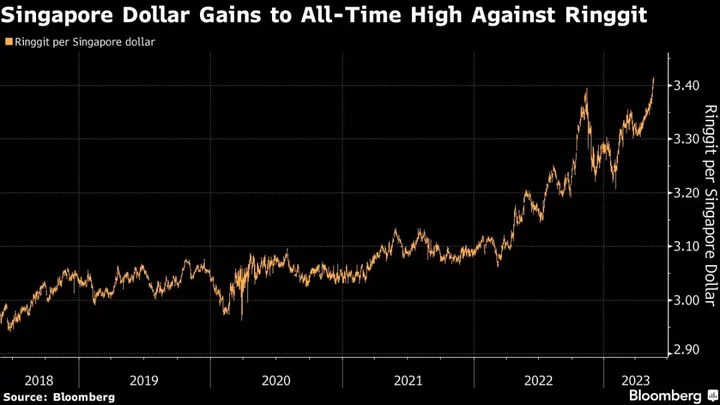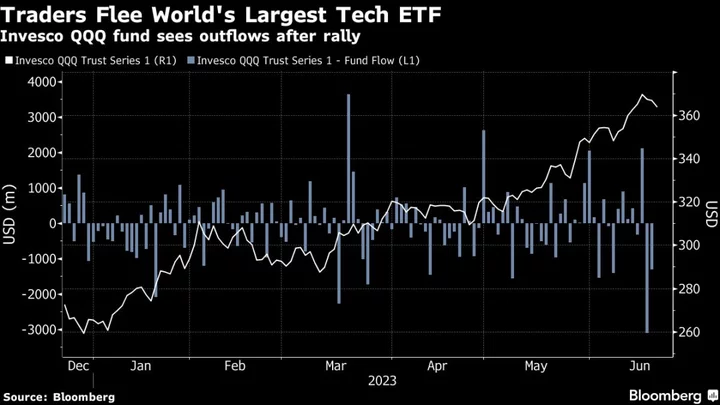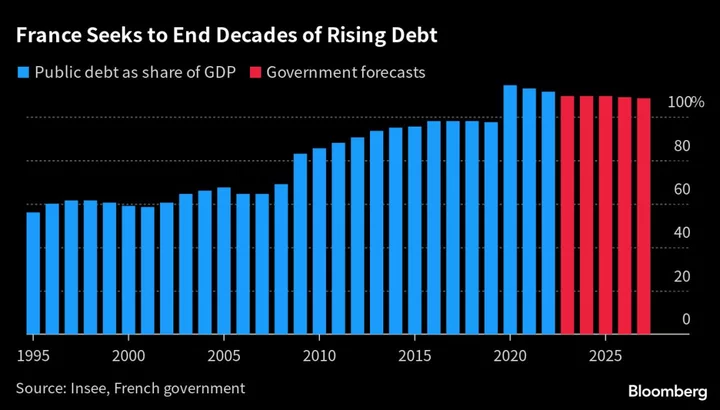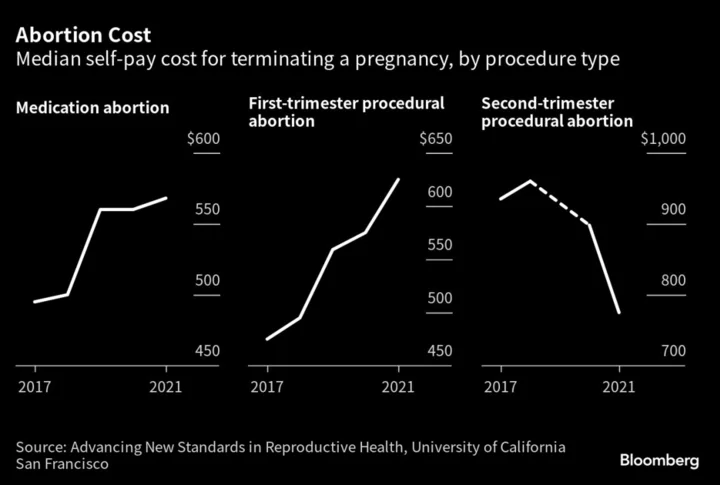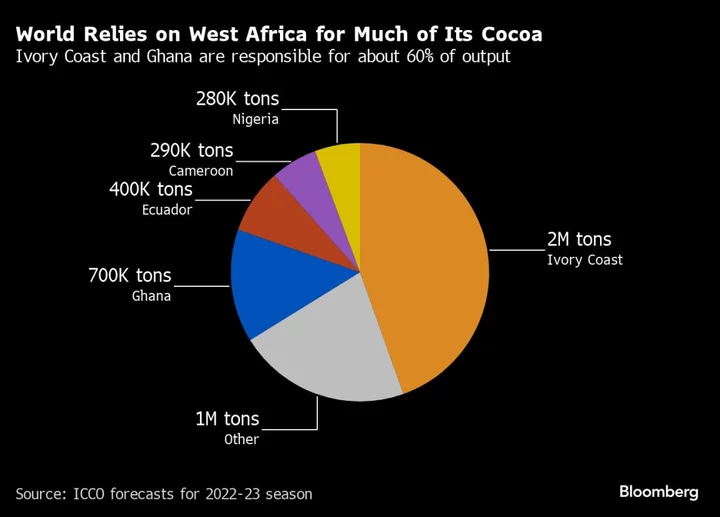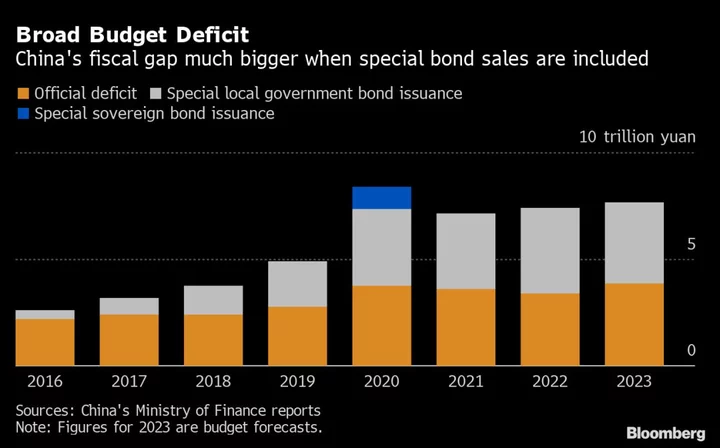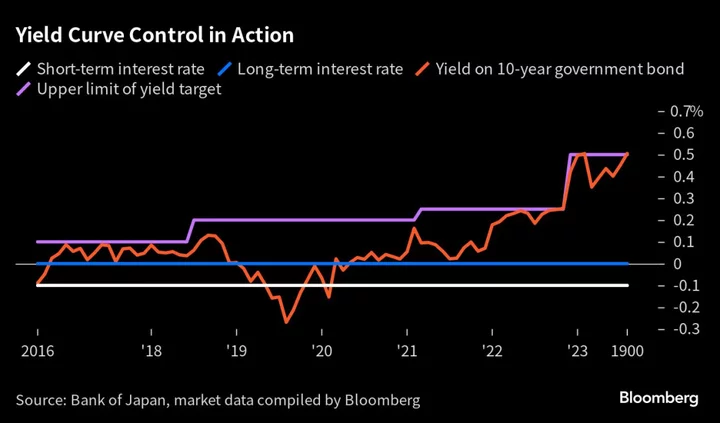The Singaporean dollar surged to the strongest level on record against the Malaysian ringgit, with the latter suffering more from weakening confidence in China’s economic recovery.
Singapore’s currency climbed 1.3% in the past four sessions against the ringgit, posting its best weekly advance in more than three months, as the island country’s dollar benefited from successive policy tightening and capital inflows. In contrast, ringgit has been impacted by a weaker China economic outlook weighing on exports growth as well as sluggish oil prices.
“Historical ringgit volatility is picking up again, and I think that the main driver is the market’s incrementally more bearish views on China,” said Galvin Chia, a currency strategist at NatWest Markets. Recent worries about the sustainability of China’s economic recovery and the potential disruption to the consumer sector from another Covid wave poses new headwinds, he added.
Reports of China’s lackluster retail sales and manufacturing data are undermining the once red-hot reopening trade, which helped push a gauge of emerging-market currencies lower for a third straight week. The dimming outlook is weighing on Malaysia’s trade balance, with April’s export growth contracting at the quickest pace in three years. On top of that, the ringgit is also dragged down by the near 40% drop in Brent oil prices from a peak in 2022.
Meanwhile in Singapore, the local dollar has been boosted by five rounds of policy tightening since October 2021, before the central bank chose to pause in April. Also, the currency is benefiting from an influx of Chinese tourists after the mainland rescinded most of its Covid controls.
The Singaporean dollar-ringgit pair is keenly followed by the market, given the two countries share close trade ties and the land border between them is one of the busiest crossings in the world.

